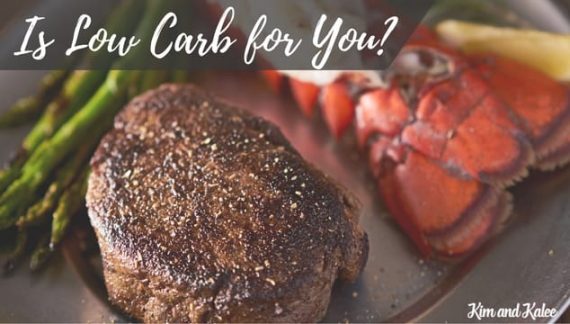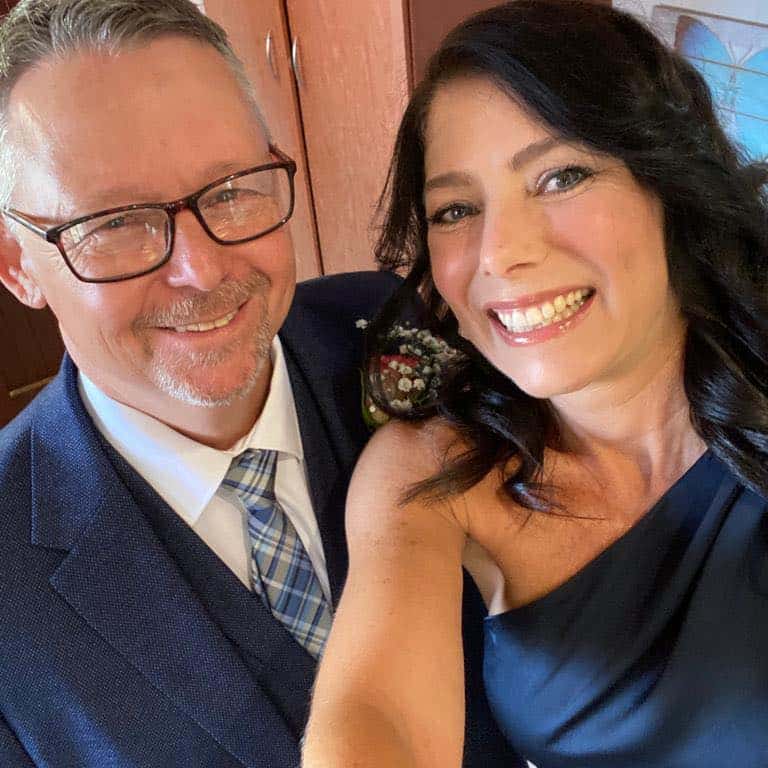5 Low Carb Diets – Which One Works for You?
This post may contain affiliate links. All opinions shared are my own. As an Amazon Associate I earn from qualifying purchases. Click to view our full disclosure.
Have you ever tried a low carb diet plan? In our society, we pride ourselves and others for their ability to lose weight quick whether we know it or not. While some diets are nutritionally sound, others risk our overall health. In my opinion, there is very little difference in the results of a high protein low carb diet to a low carb high-fat diet. A healthy diet is a healthy diet – end of story.
With that said, I wanted to share our experience with a low carb diet plan and share what we do about it because it can, in fact, help you lose weight if done correctly. In this post you’ll see the different types; this post does contain affiliate links.
Find out the differences in carbohydrates here or check out our Keto Jumpstart Guide!

What is a Low Carb Diet?
On a low carb diet, you’ll be limiting your carbohydrates and adding in foods that are high in protein and healthy fat. Each diet plan will differ a little, but typically you should expect more meats, cheese/dairy, and healthy fats and less bread and starchy vegetables like potatoes.
Why a Low Carb Diets Work
You could get very technical about how the body uses energy and burns more calories digesting protein versus carbs, but really most people following a high protein low carb diet are going to see results because they’re cutting out junk and becoming more aware of what and when they’re eating.
I don’t know about you, but when I’m busy it’s so much easier to swing through the drive thru or grab something that can be microwaved in 3 minutes and eat. Most of these convenient foods are highly processed and full of refined carbs (aka bad carbs like sugar without any good nutritional value). They are also usually packed with salt and calories in a smaller portion than say whole foods. So they don’t keep us full very long and have no benefit to our bodies really other than filling a hunger pain temporarily.
With a low-carb diet, you’ll be eating fewer refined carbs like white flour and bread, sugary cereals, crackers, cookies, pies, and pastries. These items are what give carbs a bad name because of their lack of nutritional value. Even the American Heart Association has acknowledged that these types of foods cause harm to your cardiovascular health and waistline.
What Sucks About Low-Carb
It’s usually not something people can maintain for a long period of time. I mean you’re talking about almost eliminating a whole food group. It also takes time and effort to plan out your meals, and the same meals over and over can get dull.
In the beginning of following this type of diet, you might also have some discomfort. Headaches, bad breath, fatigue and digestion changes are common problems in the short-term.
In addition, some diets restrict carbohydrate intake so much that in the long term they can result in vitamin or mineral deficiencies, bone loss, and gastrointestinal disturbances and may increase risks for various chronic diseases.
Then there are the other health factors like ketosis, vitamin or mineral deficiencies, bone loss, and gastrointestinal disturbances that can happen through long-term dieting.
It’s just not realistic to me for us to skip foods with good nutritional value like whole-grains, vegetables, and most fruits. They pack not only body-fueling vitamins and minerals, but they also have fiber to keep us full and our digestive system happy.
What Can You Eat?
A low-carb diet focuses on proteins and a few non-starchy vegetables. Some low-carb diet plans allow for small portions of specific fruits, vegetables, and whole grains.
- Meat
- Fish
- Chicken
- Above Ground Vegetables
- Full Fat Cheese & Cream
- Full fat milk
- Nuts and seeds
- Eggs
- Some fruit like berries
- Fats – including ghee, coconut oil, and butter.
Sometimes You Can Also Eat
Some low carb high-fat diets will also allow for sweet potatoes, rice, quinoa, oats, legumes, and beans. Some even allow for dark chocolate and wine on occasion.
Foods to Exclude
- Sugar (including fruit juices and soda)
- Bread
- Pasta
- Fruits
- Vegetables
- Milk
- Nuts
- Seeds
- Legumes (beans, lentils, peas)
Implementing & Meal Prepping
Some people may choose to go low-carb all at once. You can choose this method, or you can always adapt each of your meals to suit your new dietary goals. This means you could work on your breakfast for a week, then snacks, then lunch, and so on. You shouldn’t feel pressured to go cold-turkey (no pun intended) all at once. Any step in a healthy direction will help you towards your goals.
5 Different Low Carb Diets
- Atkins – The first 2 weeks are the most restrictive – allotting 20 grams of carbohydrates per day coming mostly from vegetables. Within a few weeks, your carb-allowance does go up though. You can start adding in more vegetables, healthy fats and even some whole grains. Atkins also offers pre-made food which is processed more than I’d like, but it’s convenient. Check out your options here.
- Dukan – The first week and a half are miserably stupid. You are allowed only lean protein, oat bran, and water. The next “phase” allows you to add in non-strachy veggies and more oat bran. The next phases allow you to add in more choices and eventually, you can eat whatever you want 6 days a week. The 7th day you’re back to protein and oat bran. Where is this science coming from?! If you want to learn more about this low carb diet plan, check out the creator’s book here.
- South Beach – Like the others, the first 2 weeks cut back on much of your carbs. You’ll be able to add these back and start building up to eating any food group in moderation. The plan seems simple especially in this book’s layout.
- Ketogenic – The standard ketogenic diet is 75 percent fat, 20 percent protein, and 5 percent carbs. This is an extremely low carb high-fat diet. This can be dangerous to your kidneys and body focusing it into a state called ketosis. For whatever reason, this changes how the body works (ummm because it’s freaking out maybe?) and results in some weight loss.
- Paleo – If you’ve ever heard of the caveman diet, the whole 30, or know someone that has done Crossfit, you’ve heard of this diet. It focuses on eating meat, fruits, vegetables, roots, nuts and healthy fats. You can’t have dairy or any gains on the program, and it limits refined carbs and added sugar. My favorite take on the paleo diet is the Whole 30.
Carb Cycling
You may have also heard of people carb cycling. The idea is to alternate between high and low carb meals throughout the week in order to shock the body and break through weight loss plateaus. This type of eating can also be helpful if you’re working out harder on certain days of the week.
What Do Skinny People Eat?
This is a silly question, to be frank! Everyone’s bodies are different. Some may appear skinny, but still, have the cardiovascular health of an obese person. Then if you look at different diets – there all have advocates that are different weights. For example, some assume vegans would be naturally thin and possibly a vegan diet would be great for weight loss. Well, vegans eat a lot of grains, vegetables, and fruits…..aka carbs.
There is no magic ratio or formula to lose weight quicker or keep it off longer. It takes finding what feels best for your body – mentally and physically.
My Favorite Diet
My favorite diet, and the one my mom and I both follow is everything in moderation. I truly believe our bodies are built for the foods’ God has provided for us on this Earth, and the have to be plenty powerful to be able to handle the franken-foods like Twinkies and Cheetos we throw in our mouths much of the time.
With that said, our bodies don’t require a special magical formula of low carbs or high fats or whatever. I believe we thrive on whole foods – foods from the ground or that have a mother (animals) and that no food group should ever be completely eliminated forever unless it’s a known food allergen. Our bodies were designed to handle it all.
Plus mentally – it can be hard to say “I’m never having XYZ again!” and can leave you going “Well when I hit my goal weight I’m going to Pizza Hut!” That is such a yo-yo, negative attitude to get into.
By allowing ourselves a treat every now and again, we never have to feel deprived. That makes it easier to stay follow a healthy lifestyle forever versus when you see a certain number of pounds come off.
In the end, cutting back on processed foods and focusing on whole foods is going to get you very similar results.
I personally love the Portion Fix included in the 21 Day Fix workout program because it includes all of the food groups in their perfect portions and servings for the day. Plus it’s simple to follow and even allows for a treat up to 3 times a week. The first 3 weeks I followed it I still had pizza on a Friday, never eliminated a food group and still lost 11lbs! It’s also been helpful in teaching me how to eyeball and measure my food even 3 years later. Another great one is 90/10 by Joy Bauer.
What is your take on a low carb diet plan?
You may also like how we explain the differences in carbohydrates here or our list of grab and go breakfast ideas!




